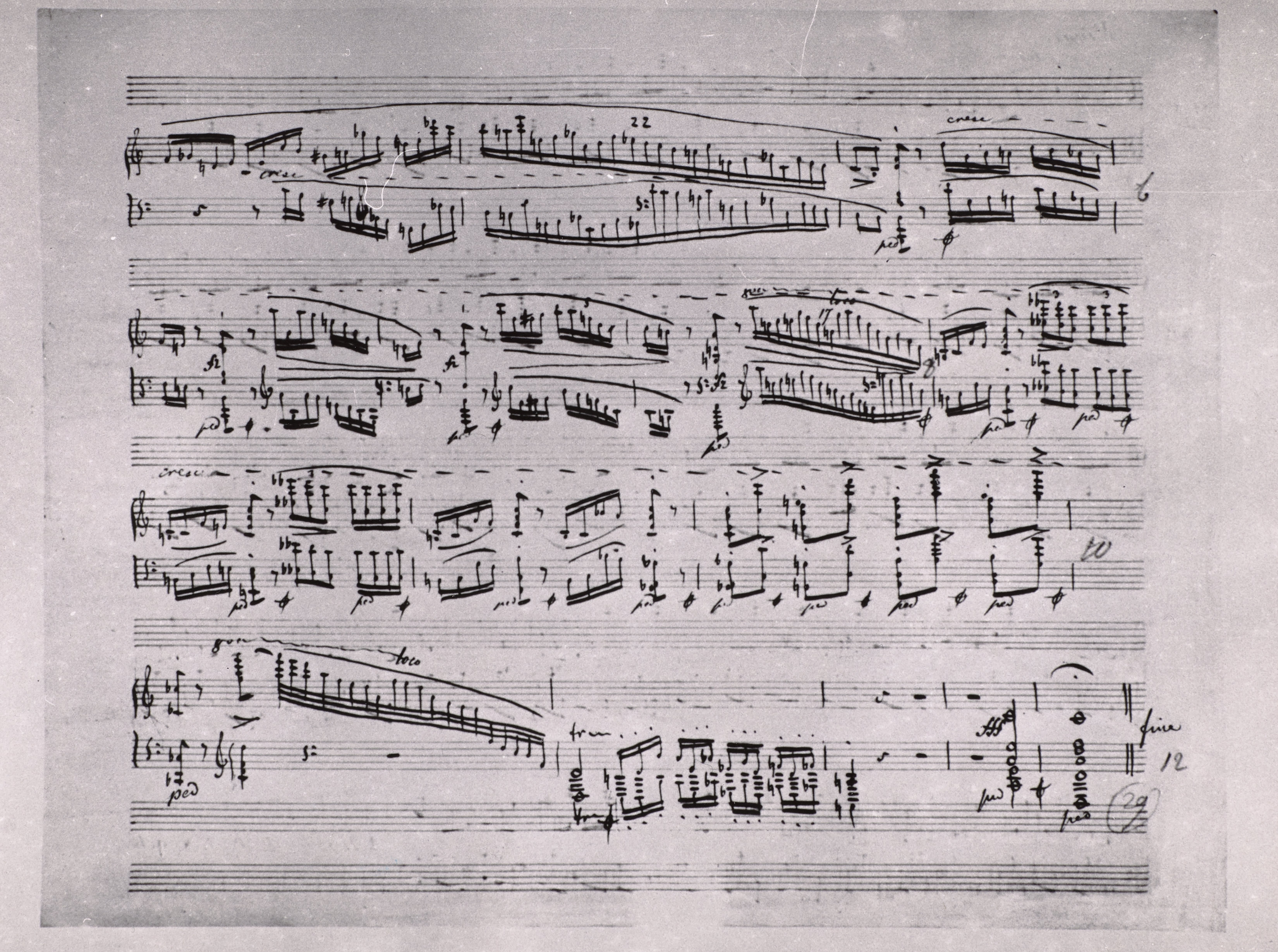




|
||

|
||

|
2 dots in GE |
|

|
4 wedges suggested by the editors |
A (→FC) feature distinct wedges above the R.H. chords. With the layout of the manusripts – lower notes of the R.H. chords wirtten on the lower staff – those marks pertain certainly to both hands, hence we also add wedges below the L.H. octaves. This solution was adopted already in FE (→EE), although only in bar 10. EE (→EE) in bar 9 and GE in both bars reproduce the mark as a staccato dot (in the R.H. only).
Similarly in bars 11-12.
Compare the passage in the sources »
category imprint: Differences between sources; Editorial revisions
issues: Inaccuracies in GE, Inaccuracies in FE, FE revisions, Wedges
notation: Articulation, Accents, Hairpins

